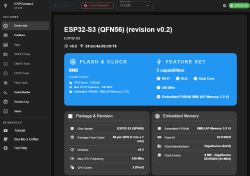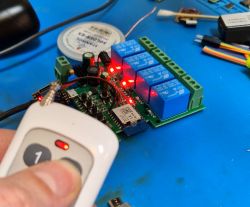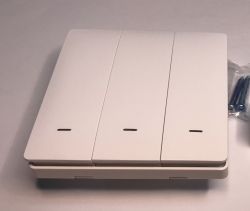FAQ
TL;DR: New SSD1306 I2C OLEDs need >400 ms startup delay—8× longer than earlier 50 ms panels [Elektroda, Marek_Skalski, post #18530830] "They either display nothing or just flash" [Elektroda, Marek_Skalski, post #18530364] Upgrading ESP8266 core to 2.6.3 and using ESP.deepSleep(...UL) fixed the flicker [Elektroda, pier, post #18536670]
Why it matters: Correct timing, wiring and firmware cut boot failures and display flashing to zero.
Quick Facts
• ESP8266 Arduino core: use v2.6.3 or newer [Elektroda, khoam, post #18536243]
• New-series SSD1306: require >400 ms power-on delay [Elektroda, Marek_Skalski, post #18530830]
• Default Adafruit I2C clock is 400 kHz; 50-100 kHz improves stability [Elektroda, khoam, post #18530954]
• deepSleep argument must be uint64_t: e.g. 1 800 000 000 µs (30 min) [Elektroda, khoam, post #18535765]
• For auto-wake, connect GPIO16 (D0) to RESET [Elektroda, khoam, post #18535909]
1. Why does my SSD1306 screen blink or stay blank after adding ESP.deepSleep() or Blynk?
The new display boots slower than your code. When deepSleep() or Blynk adds even a 10 ms delay, the OLED misses its first commands and shows only a flash [Elektroda, pier, post #18531822] Add a >400 ms startup delay or initialise the display after Wi-Fi/Blynk and use the UL suffix in deepSleep().
2. How much power-on delay do the new SSD1306 OLEDs need?
Tests show they need more than 400 ms—about eight times the ~50 ms required by older boards [Elektroda, Marek_Skalski, post #18530830]
3. Which ESP8266 core version stops the flicker with deep sleep?
Updating the Arduino ESP8266 core to v2.6.3 removed all overnight crashes and display issues [Elektroda, pier, post #18536670]
4. What is the correct way to call ESP.deepSleep()?
Pass a 64-bit value: ESP.deepSleep(sleepTimeS * 1 000 000UL); The UL forces 32-bit multiplication to promote to uint64_t, matching the function signature [Elektroda, khoam, post #18535765]
5. Do I need to link GPIO16 to RESET for deep sleep?
Yes. GPIO16 toggles LOW at the wake-up time; wiring it to RESET lets the ESP8266 reboot automatically [Elektroda, khoam, post #18535909]
6. How can I slow I2C to stabilise the display?
Use the extended constructor: Adafruit_SSD1306(SCREEN_WIDTH, SCREEN_HEIGHT, &Wire, -1, 100000UL, 100000UL); Lowering the clock to 50–100 kHz reduces missed bytes on bit-banged ESP8266 I2C [Elektroda, khoam, post #18530954]
7. The display dies after any delay(); why?
Delay() postpones I2C writes while power stays on. The OLED waits only ~100 ms for commands; longer gaps (>10 ms observed by the author) make it time out and turn off [Elektroda, pier, post #18531822]
8. Can repeated Wire.begin() calls break the OLED?
Yes. display.begin() implicitly calls Wire.begin() on default pins (D1, D2). If you already ran Wire.begin(D5, D6), the bus jumps pins and communication stops [Elektroda, khoam, post #18531538] Pass the “false” flag to skip the second call.
9. What constructor should I use for an I2C SSD1306 on custom pins?
- Wire.begin(SDA_pin, SCL_pin);
-
define OLED_RESET -1
- Adafruit_SSD1306 display(128,64,&Wire,OLED_RESET,100000UL,100000UL);
This matches the new library API and lets you set clock speed [Adafruit Docs].
10. Are two-colour (yellow/blue) OLEDs less compatible?
Some two-tone clones report incompatible controller IDs and ignore certain commands, causing random blanking despite correct wiring [Elektroda, pier, post #18534524]
11. How do I know if the driver RAM failed to allocate?
Open Serial Monitor. If you see “SSD1306 allocation failed”, the ESP8266 could not reserve the 1024-byte buffer (12 % of available RAM) and the screen will stay dark [Elektroda, khoam, #18534898; Adafruit].
12. Quick 3-step: debug a blank SSD1306 on ESP8266
- Check 3V3, GND, SDA, SCL continuity and 4.7 kΩ pull-ups.
- Upload I2C scanner; confirm address 0x3C.
- Add Serial.print after display.begin(); if message appears but screen stays blank, insert a 500 ms delay then clear/display again [Elektroda, Marek_Skalski, post #18530830]







![[Arduino] SSD1306 flashes after adding Deep.sleep/Blynk [Arduino] SSD1306 flashes after adding Deep.sleep/Blynk](https://obrazki.elektroda.pl/3037729300_1584207426_bigthumb.jpg)
![[Arduino] SSD1306 flashes after adding Deep.sleep/Blynk [Arduino] SSD1306 flashes after adding Deep.sleep/Blynk](https://obrazki.elektroda.pl/8074950200_1584207472_bigthumb.jpg)